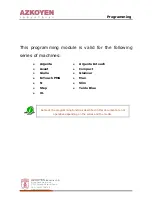
PERFECT STITCHING
Tension of upper and lower threads should
be equal, just sufficiently strong to lock
both threads in material.
Perfect stitching appears flat with no
puckering of material.
INCORRECT STITCH (A)
When the upper thread lies on the surface
of the material by pulling the lower thread
up as shown.
This is caused by tight tension on the upper
thread or loose tension on the lower thread.
To correct this, turn the upper thread tension
dial to a lower number.
If perfect stitching cannot be obtained by
adjusting upper thread tension, adjust bobbin
tension.
INCORRECT STITCH (B)
When the lower thread lies on the under
surface of the material by pulling upper
thread down as shown.
This is caused by loose tension on the upper
thread or tight tension on the lower thread.
To correct this, turn the upper thread tension
dial to a higher number.
If perfect stitching cannot be obtained by
adjusting upper thread tension, adjust bobbin
tension.
NOTE: It is recommended that a test sample
is made before starting to sew.
-16-
Summary of Contents for 681B-UG
Page 1: ...Brother 681B UG ...
















































